Curation, Dissemination, and Reusability of Research Code in GRASS
Vaclav (Vashek) Petras, Anna Petrasova
NCSU GeoForAll Lab
at the
Center for Geospatial Analytics
NC State University
IALE-North America 2025 in Raleigh, NC, April 13-17, 2025
Vaclav (Vashek) Petras
- Sr. Research Software Engineer at NC State's Center for Geospatial Analytics
- GRASS: Core Development Team, Project Steering Committee
- OSGeo: Charter Member, GRASS is an OSGeo Project


How to publish a method?
- supplemental file to a paper
- Zenodo upload
- ...
- source code repository on GitHub
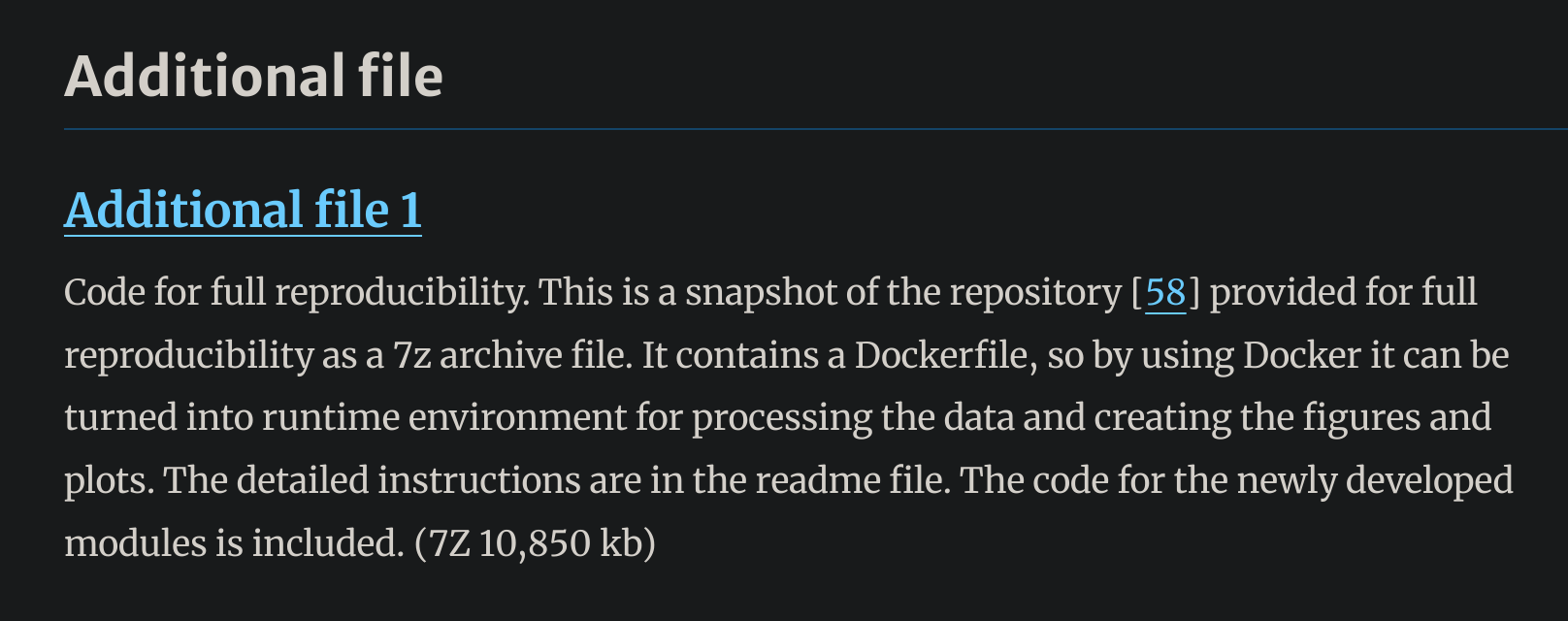
Okay, I uploaded my code to GitHub.
- Is it clear how to use it?
- What happens when my funding ends?
- Does it work with the new software versions?
- What if I don't want to touch it anymore?
- What if I need to use it again?
- How someone else will know about it?
- Can someone use it in a different way?
- How can I combine it with some other code?
- How can I use it with different data?
GRASS
- geospatial processing engine
- 400+ processing tools
- 400+ more tools in GRASS Addons repository
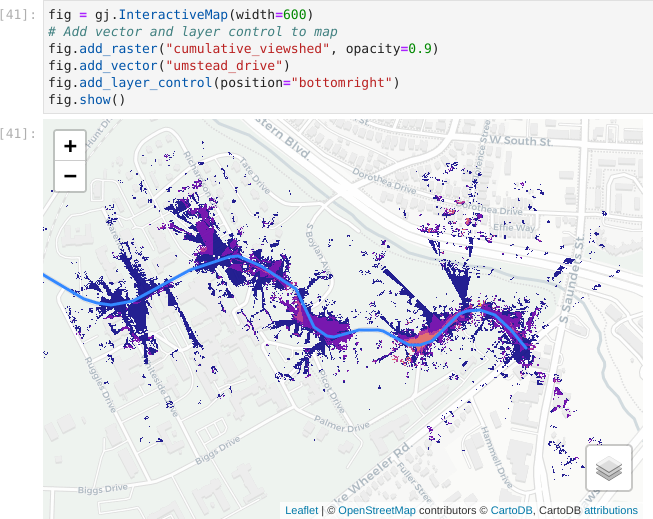
GRASS Tool
- Aka: Function, module, command, utility
- Specific set of functionality
- Code and documentation
- Python, C, or C++

Tool Example: Wind-water Interactions
r.windfetch – distance which winds blow without obstruction
In GRASS Addons repository
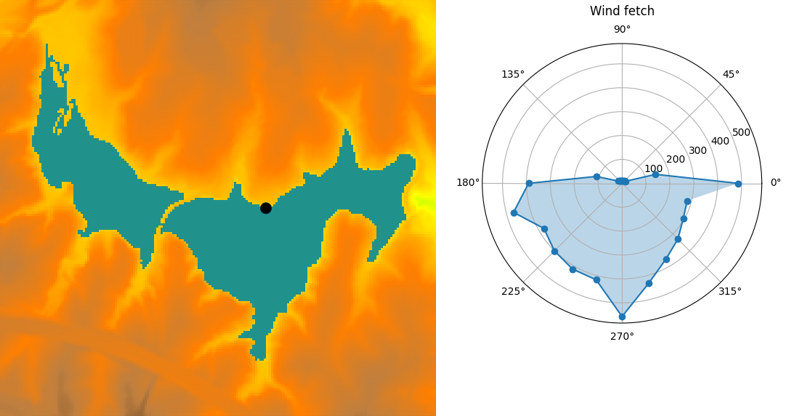
by Anna Petrasova, funded by NSF Award #2322073, granted to Natrx, Inc.
Documentation: Standardized Interface
- Standardized definition, overview, and example.
- Specific, detailed description and examples.
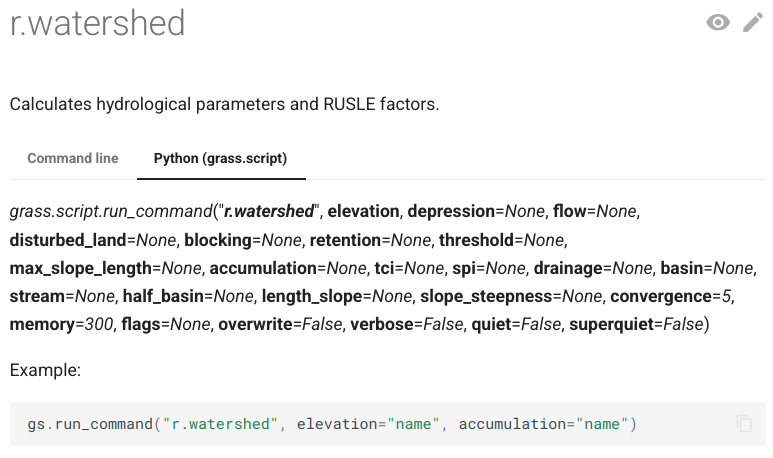
Documentation: Authors and Source Code
- Specific authors listed for each tool.
- Documentation links to the source code of each tool.
- Also: See also section showing related or similar tools.
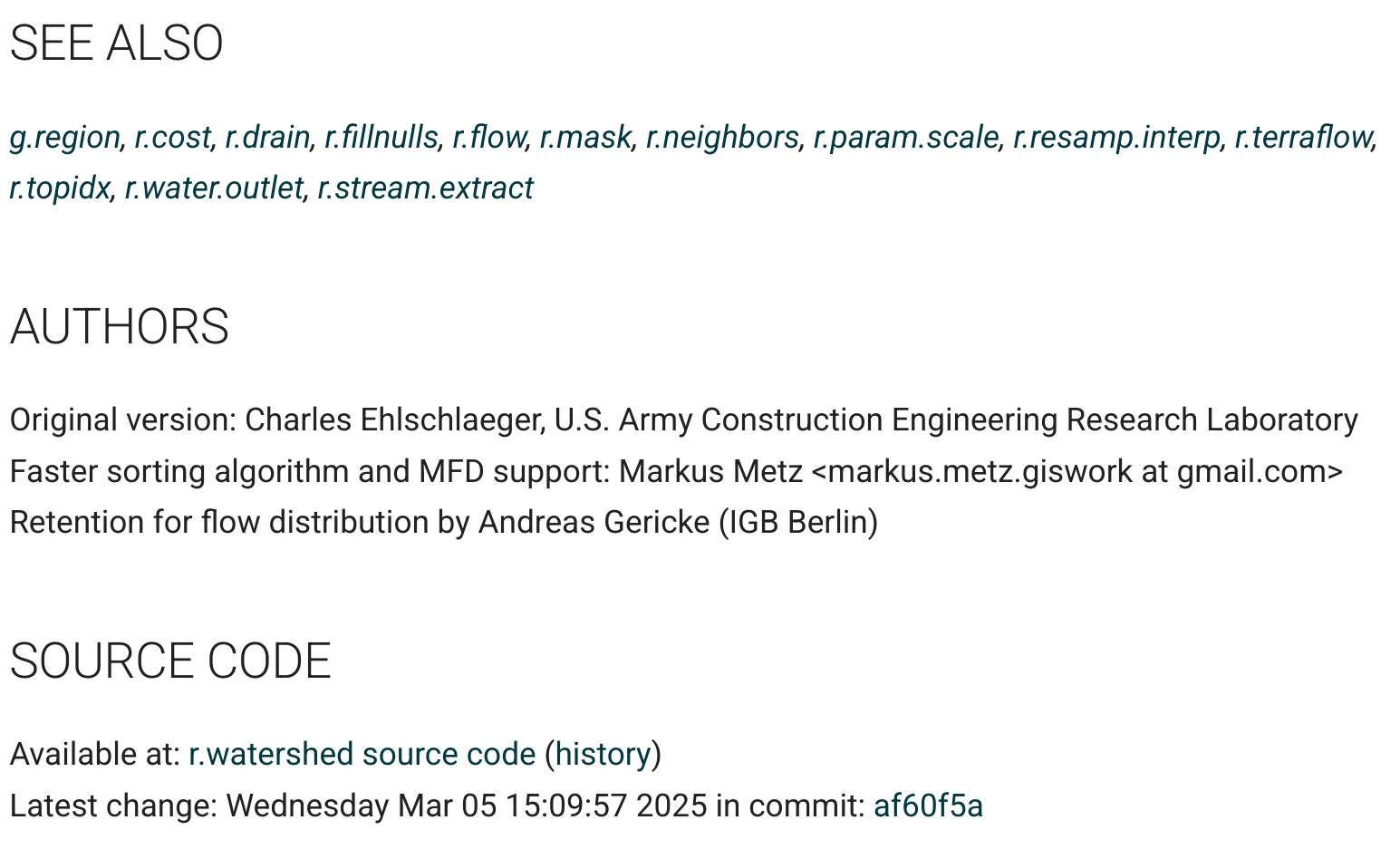
Documentation: References
- References to papers associated with tools.
- References to related and cited scientific papers.
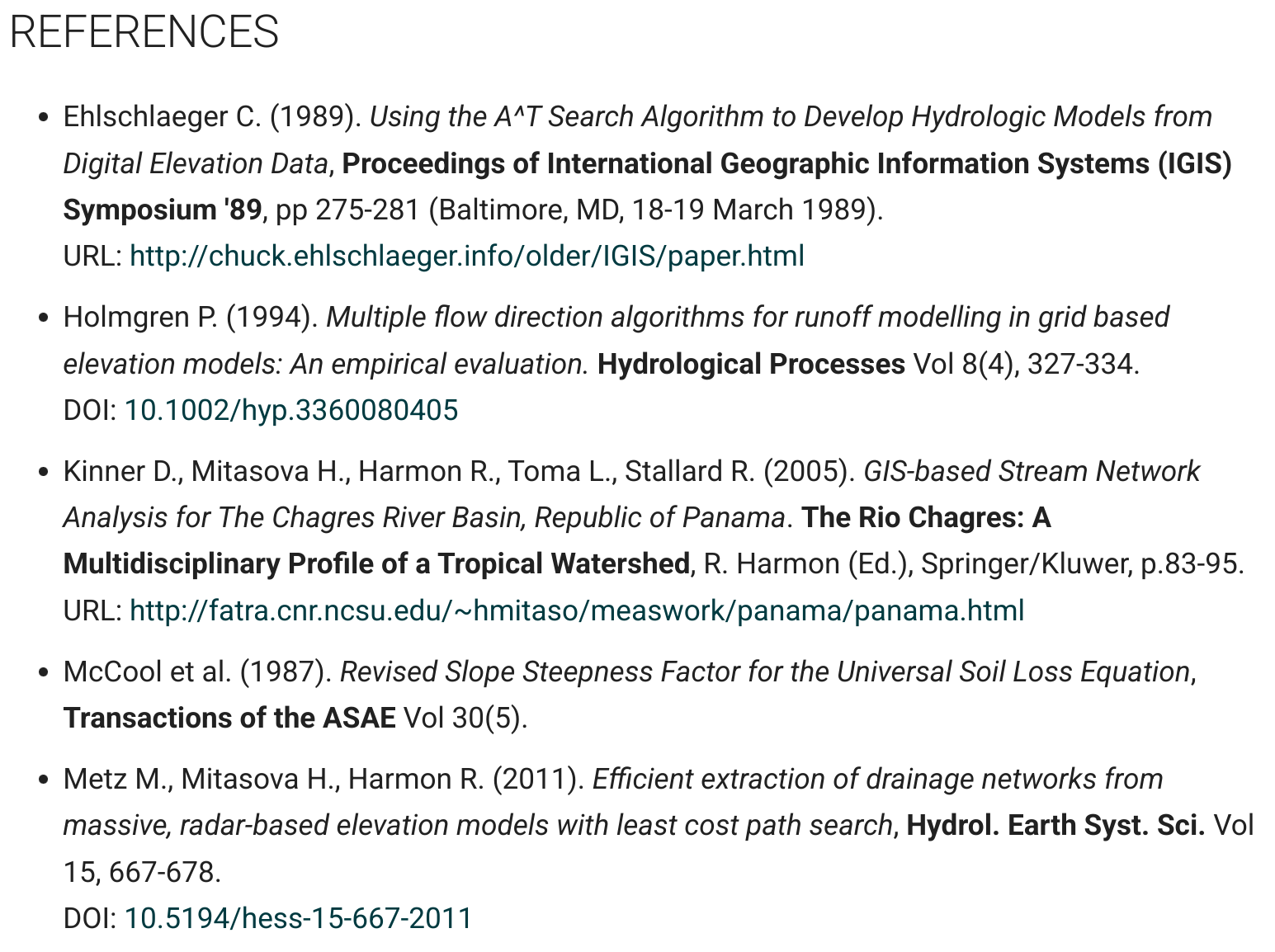
- Is it clear how to use it? ✓
- What happens when my funding ends?
- Does it work with the new software versions?
- What if I don't want to touch it anymore?
- What if I need to use it again?
- How someone else will know about it?
- Can someone use it in a different way?
- How can I combine it with some other code?
- How can I use it with different data?
Curation
Initial Publishing
- Researchers, code authors develop and publish new tools and algorithms.
- Reviewes and mentors review the code, guide new contributors, foster best practices.
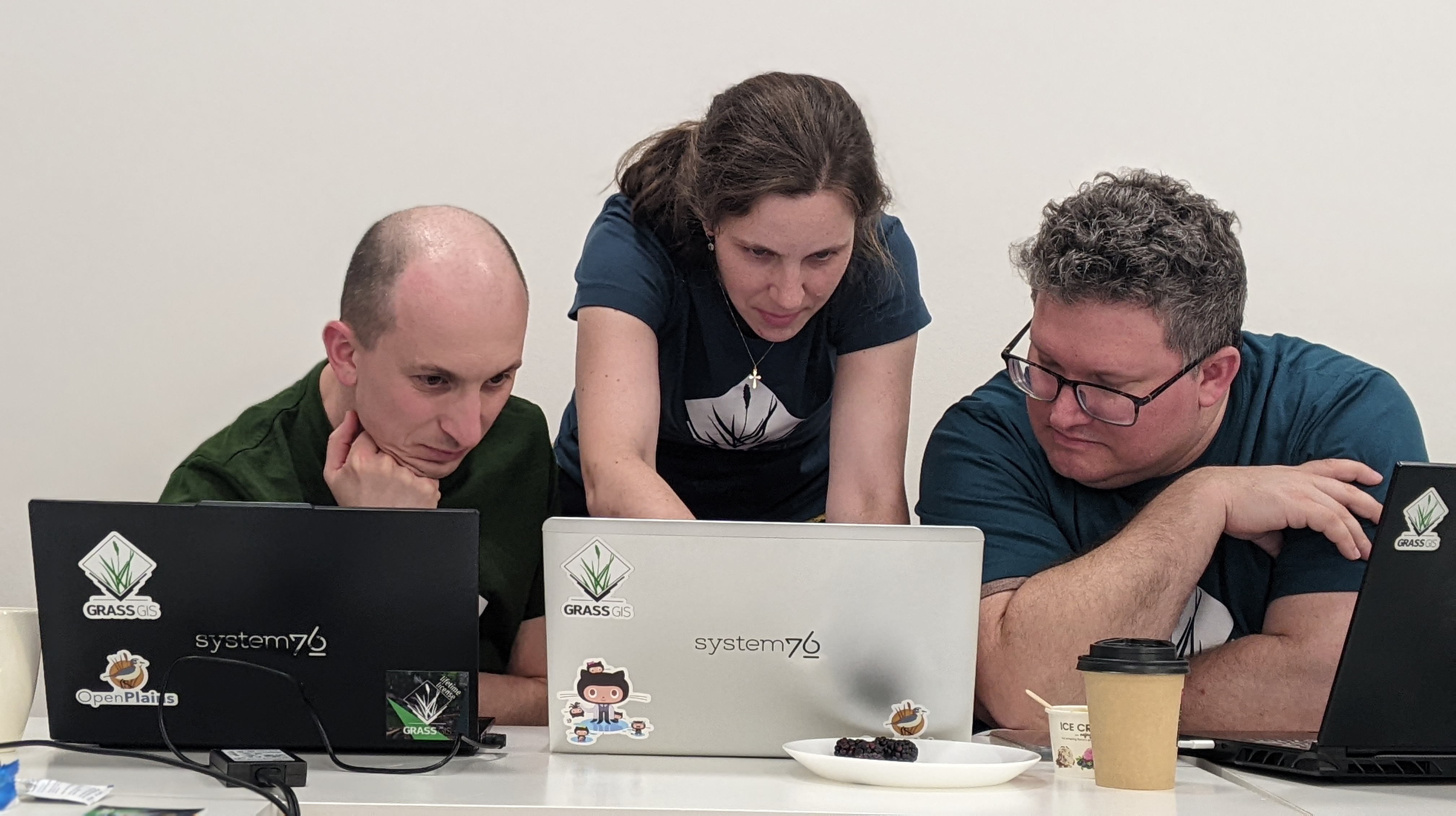
Commercial Support
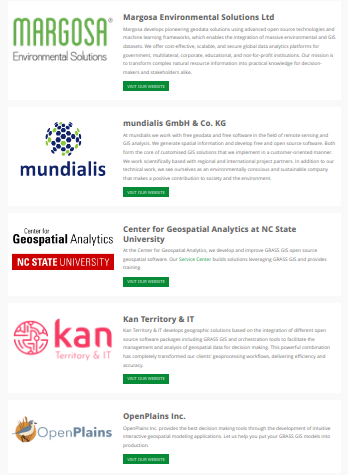
Long-Term Curation
- Technical maintainers address issues like deprecated libraries and API changes to keep tools functional.
- Community organizers host events like meetups and sprints.
- Governance leaders foster collaboration and ensure the sustainability of the project.
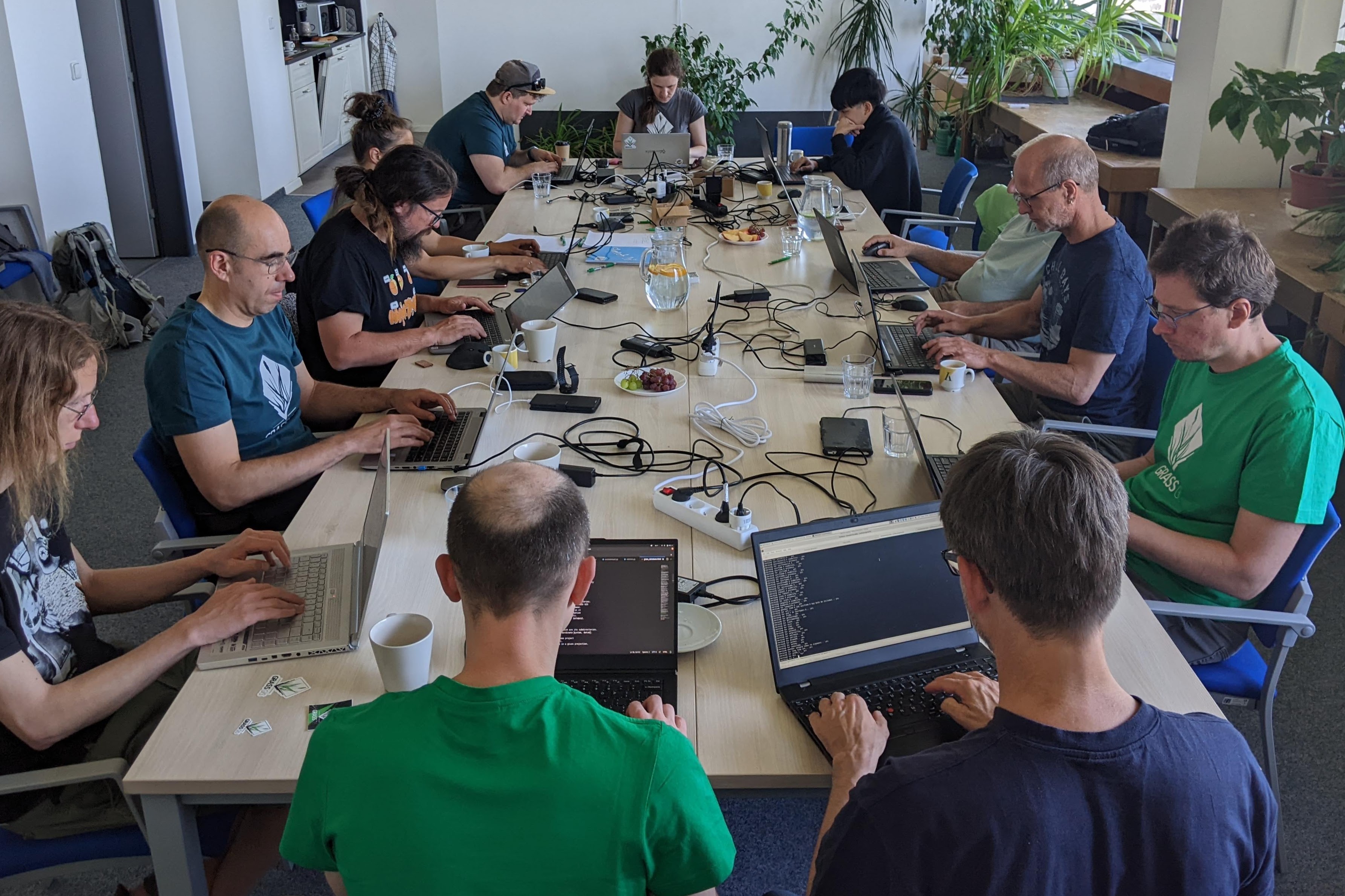
Project Steering Committee
- Elections: October 2024, Positions Filled: 4
- Total Members: 9, Term Length: 6 years
- OSGeo Foundation committee
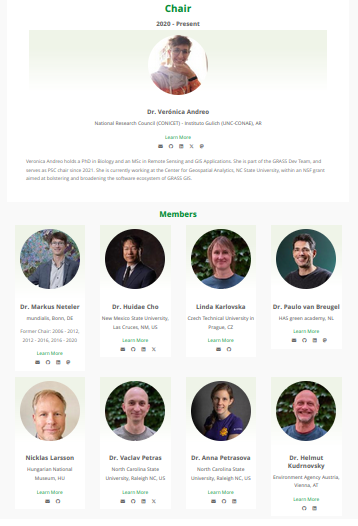
Tools: Skyview - Algorithm
r.skyview – non-directional alternative to shaded relief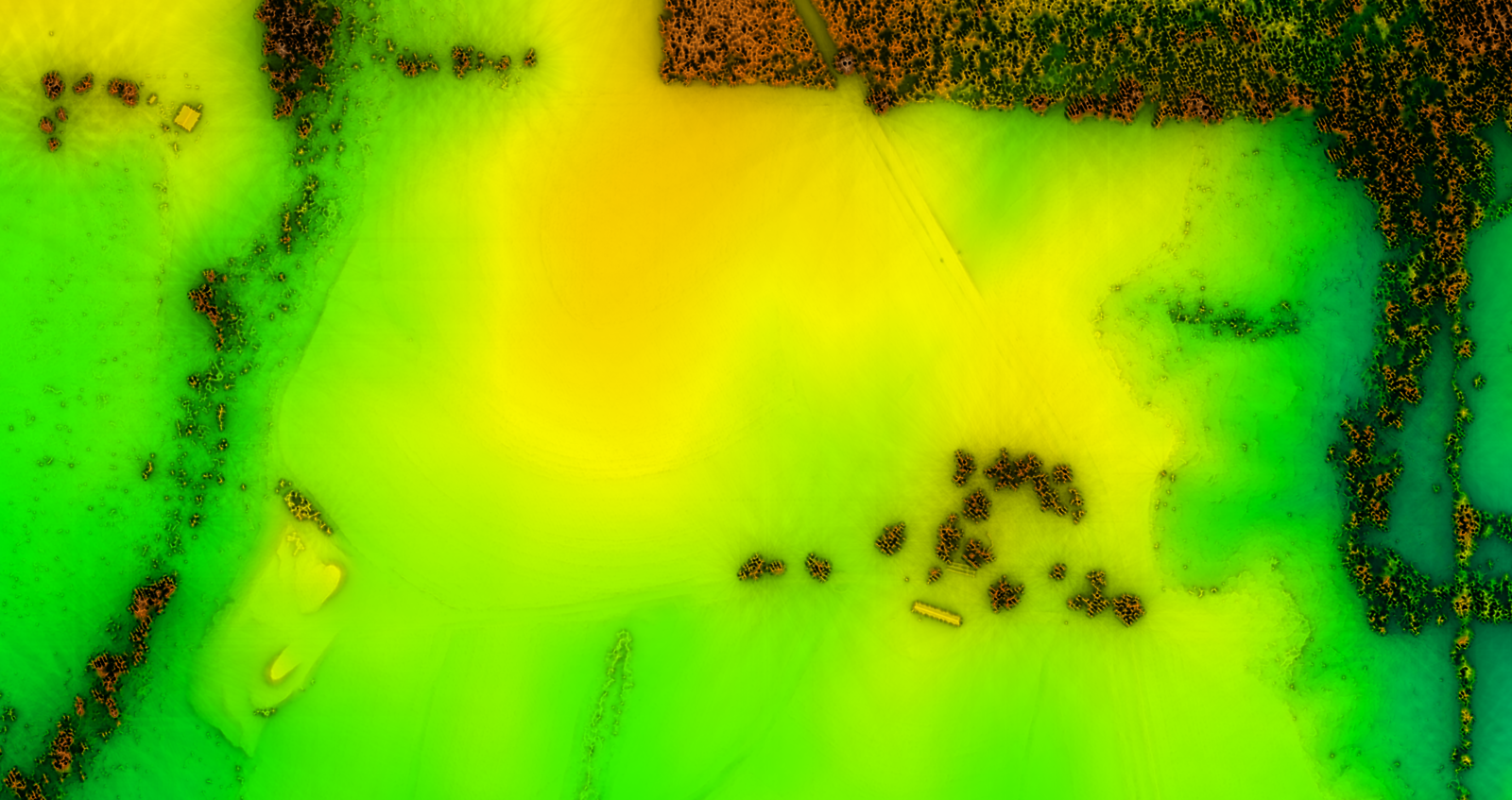
by Anna Petrasova
Tools: SLIC - Algorithm
i.superpixels.slic - image segmentation using SLIC superpixels
by Rashad Kanavath and Markus Metz
Tools: EODAG Digestion - Data Handling
download, import, preprocessing, cloud detection, and masking of remote sensing data with EODAG (Earth Observation Data Access Gateway)
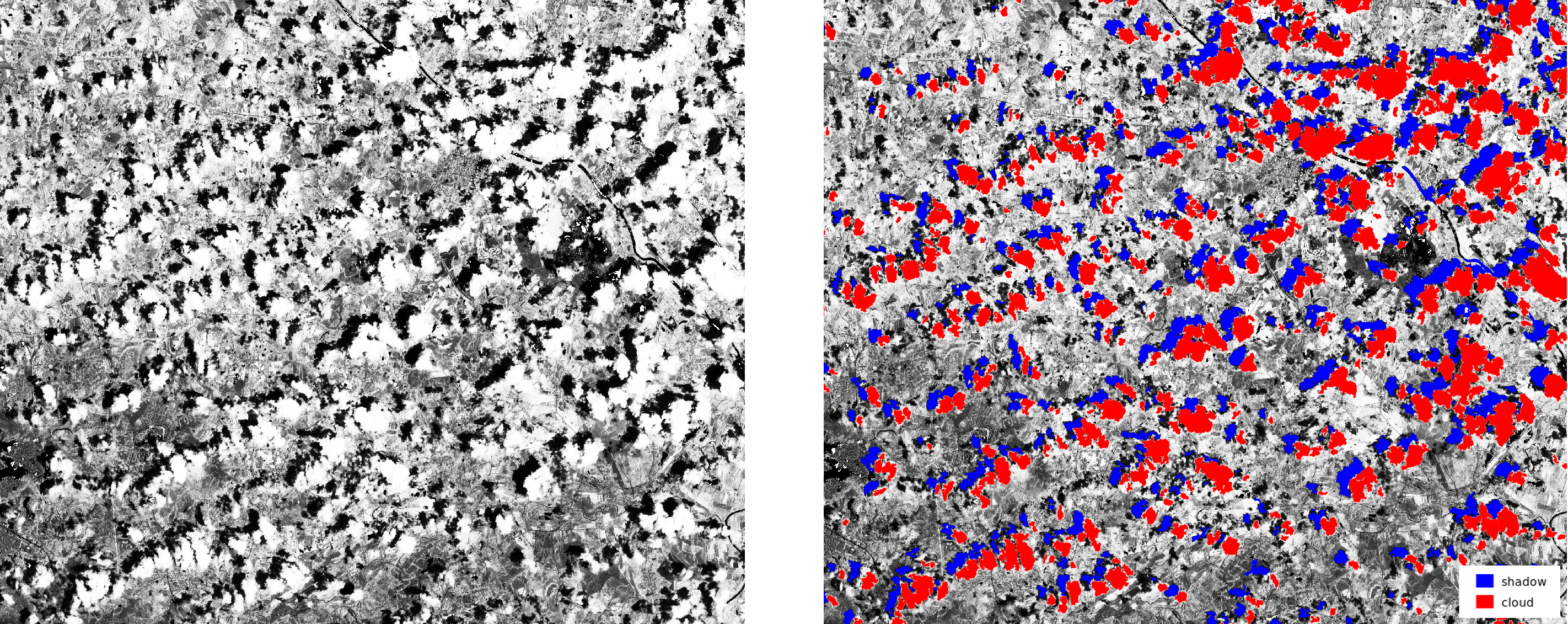
by Hamed A. Elgizery, Veronica Andreo, Stefan Blumentrath
Tools: Temporal Algebra - General Algoritm
D = if(start_date(A) < "2005-01-01", A + B)
Sum maps from A with maps with equal time stamps from B which are temporally before Jan 1, 2005
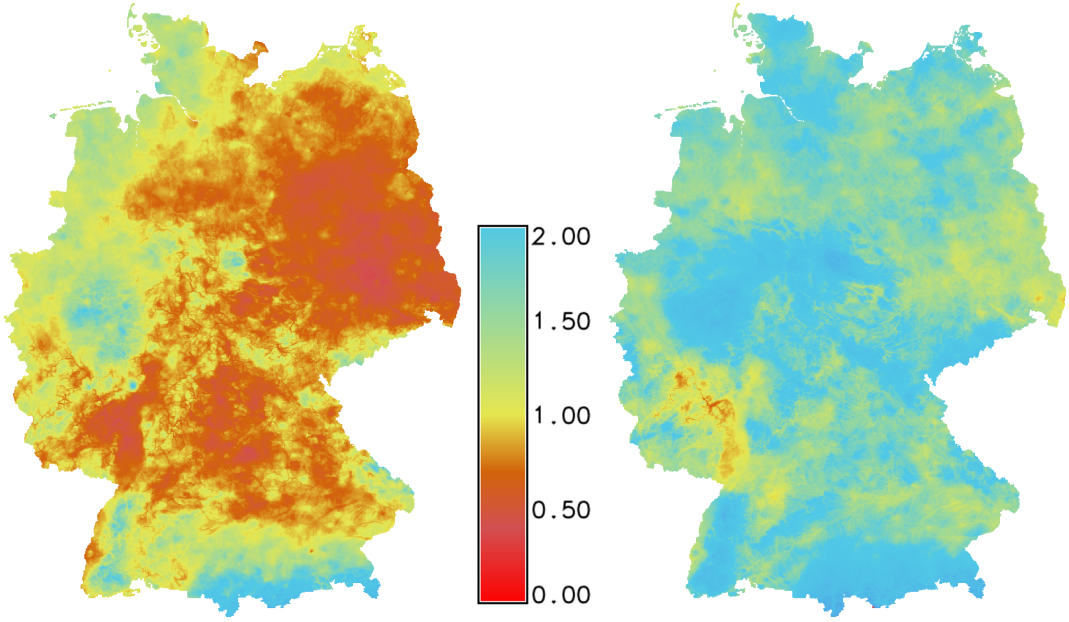
by Thomas Leppelt and Soeren Gebbert
Tools: Fast Flow Accumulation - Field-specific Algorithm
r.accumulate – fast weighted flow accumulation, watersheds, stream networks, and longest flow paths using a flow direction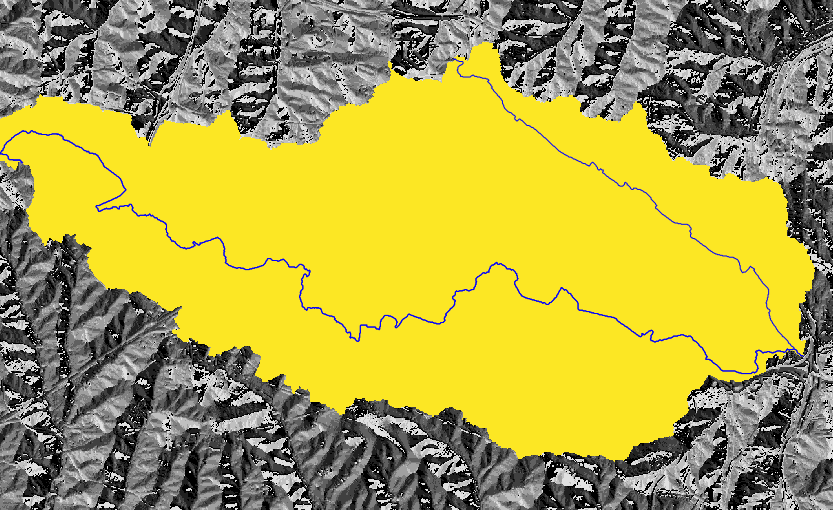
by Huidae Cho
Tools: Vector Topology Cleaning - Build Over Time
v.clean – automated topology with outputs for additional checks
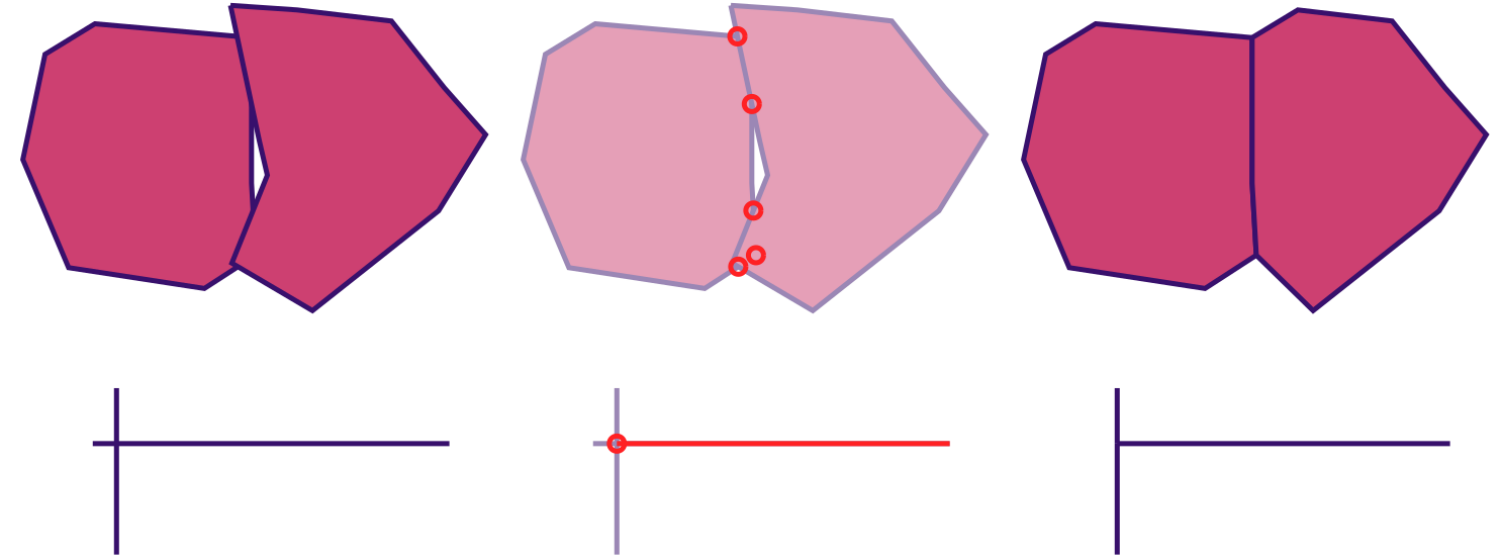
by Markus Metz, Radim Blazek, and others
Tools: Machine Learning - Addition of Algoritm
Supervised classification with Support Vector Machines
- i.svm.train: Train a Support Vector Machine
- i.svm.predict: Predict with a Support Vector Machine
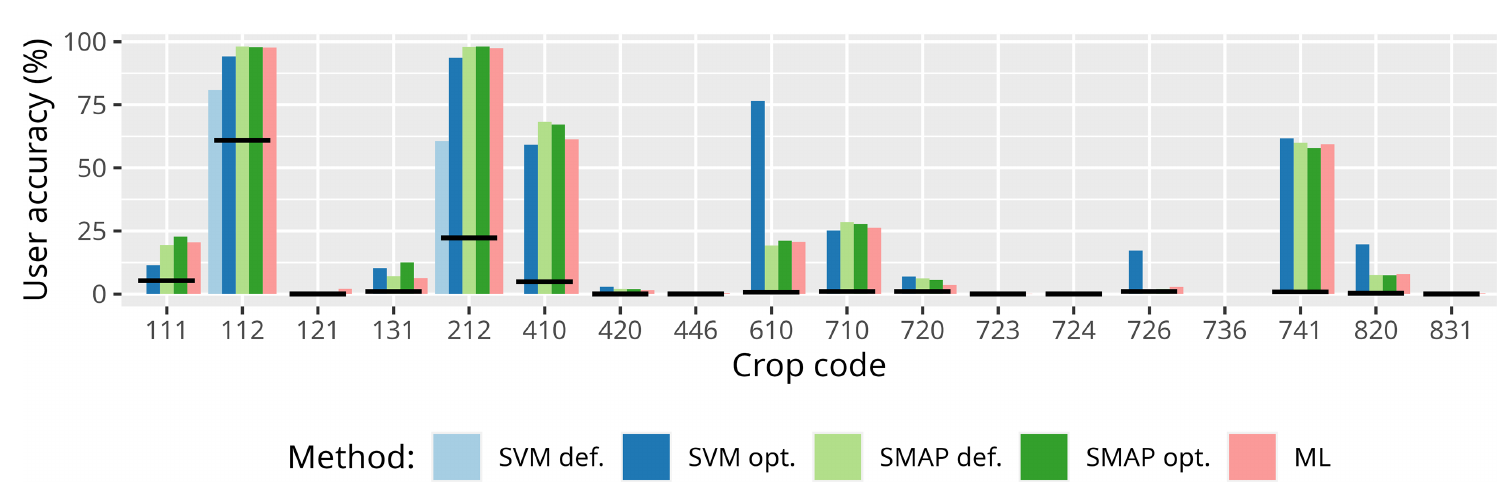 by Maris Nartiss (Nartiss & Melniks 2023)
by Maris Nartiss (Nartiss & Melniks 2023)
Tools: Better Horizon Identification - Improvemnt of Tool
r.horizon: Output for multiple points, distances, and many other improvements
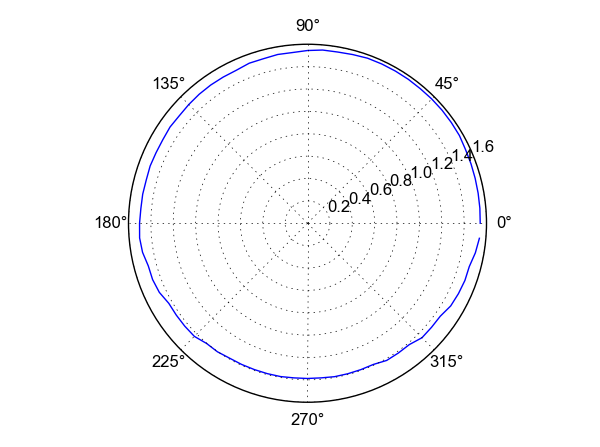 by Anna Petrasova, funded by NSF Award #2322073, granted to Natrx, Inc.
by Anna Petrasova, funded by NSF Award #2322073, granted to Natrx, Inc.
Tools: Urban Modeling - Model
r.futures - set of tools for urban growth modeling
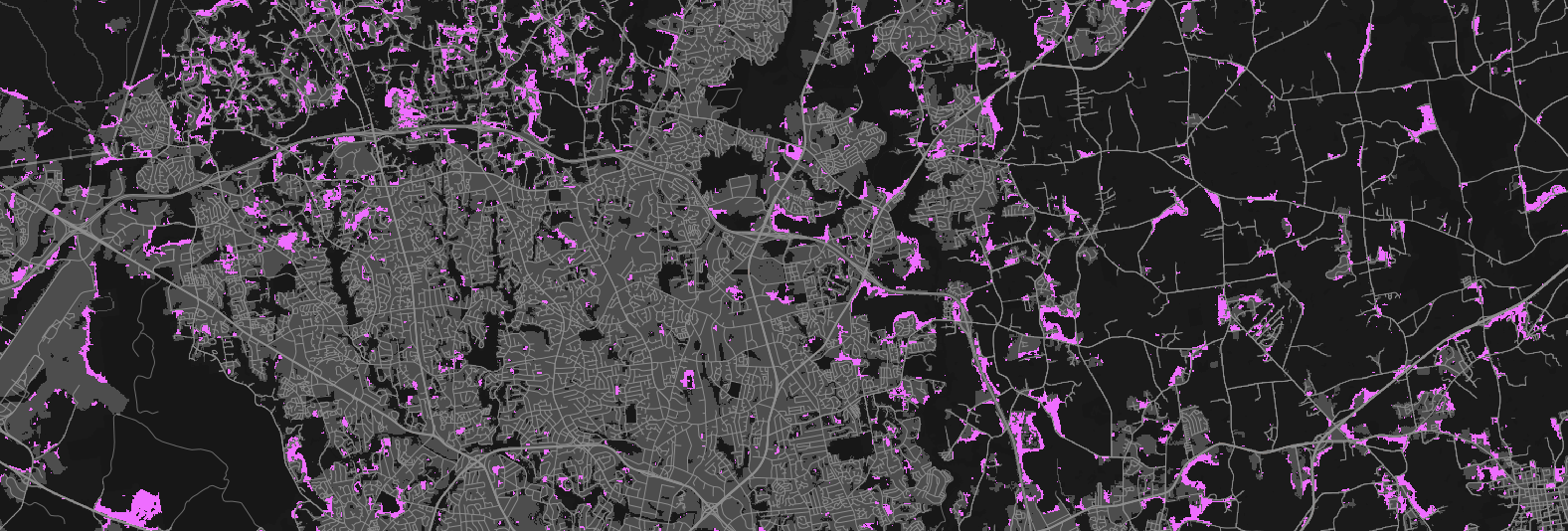
by Meentemeyer et al.
- Is it clear how to use it? ✓
- What happens when my funding ends? ✓
- Does it work with the new software versions? ✓
- What if I don't want to touch it anymore? ✓
- What if I need to use it again? ✓
- How someone else will know about it?
- Can someone use it in a different way?
- How can I combine it with some other code?
- How can I use it with different data?
Dissemination
Python
- Python API comes with GRASS

Command Line
- Interactive shell
- One-time execution or batch usage with
--exec
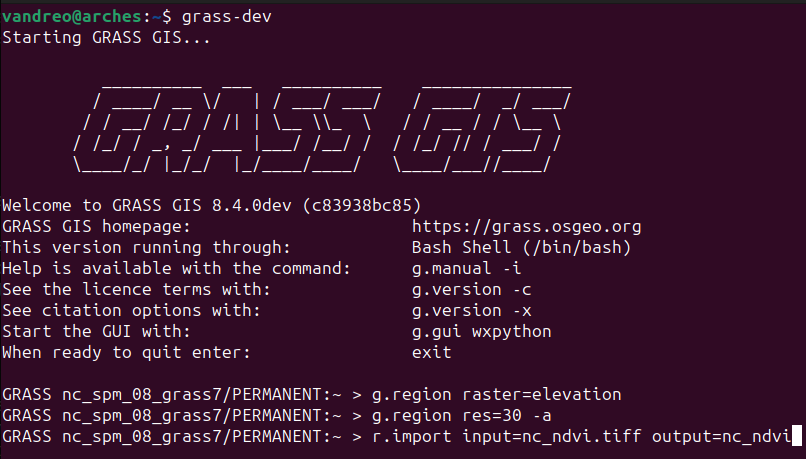
Graphical User Interface
- Interactive use on a desktop
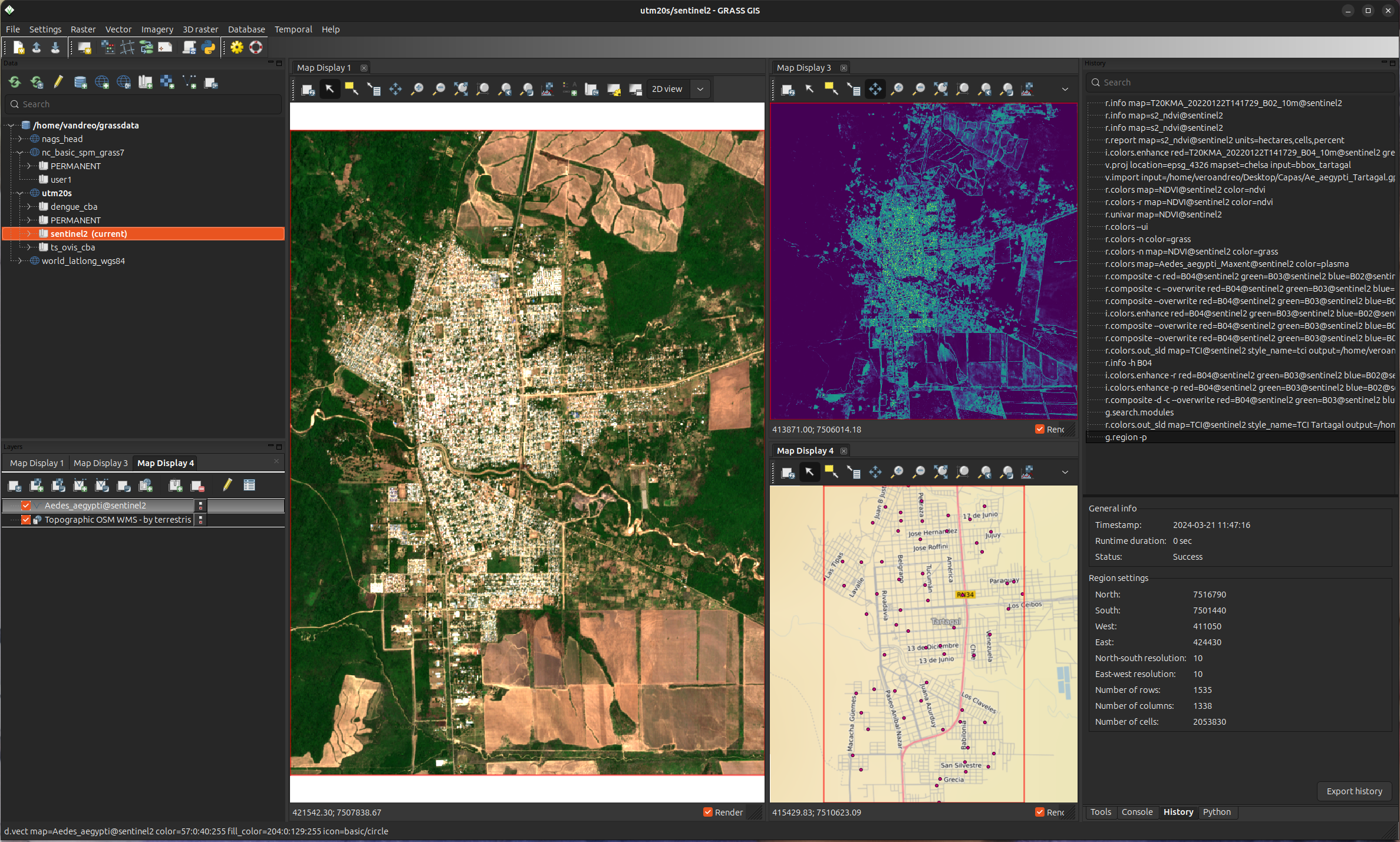
actinia
- REST API and advanced processing system for cloud
R
- rgrass package to use GRASS from R is on CRAN
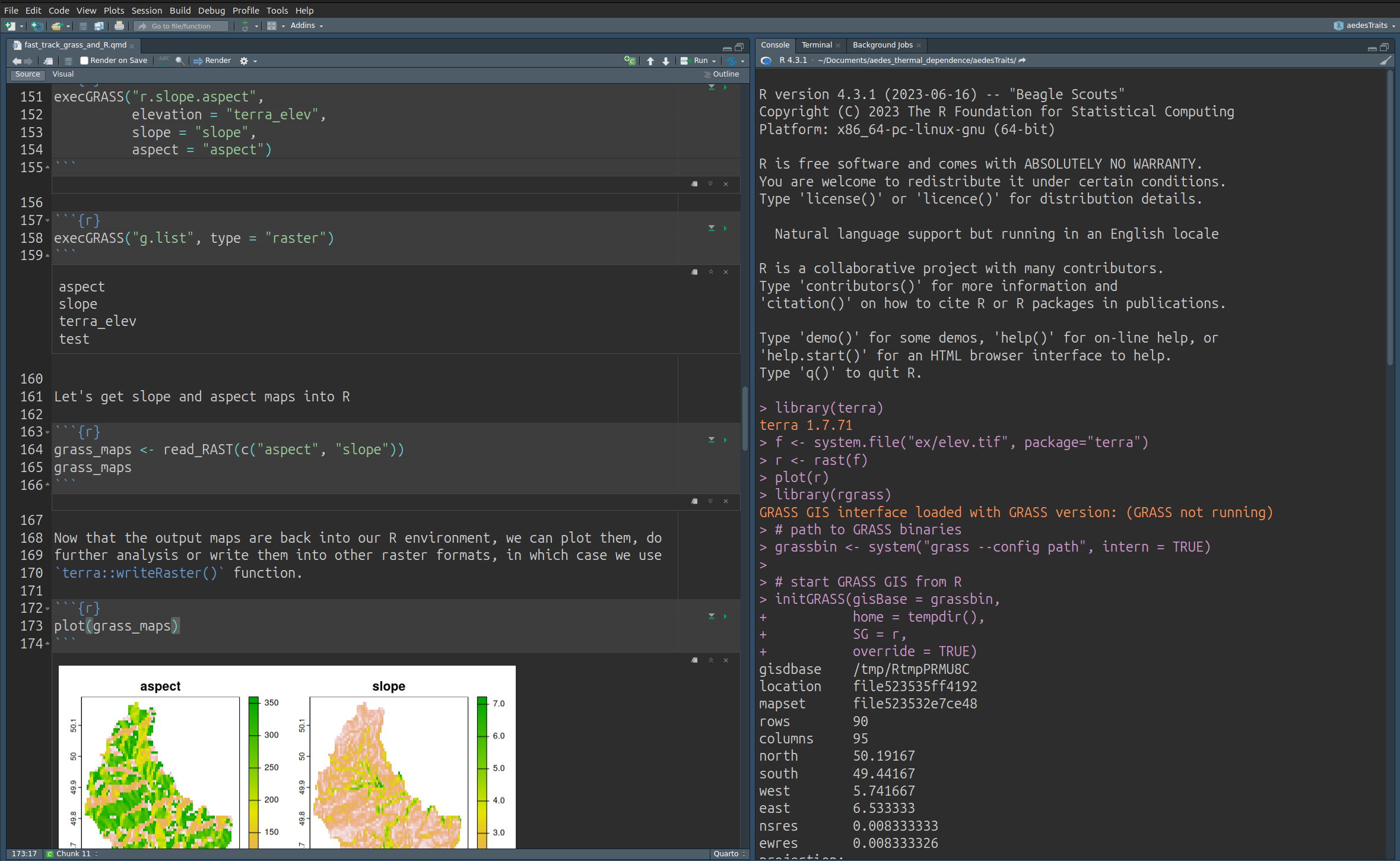
QGIS
- GRASS tools are available through the Processing Plugin
(GUI and Python)
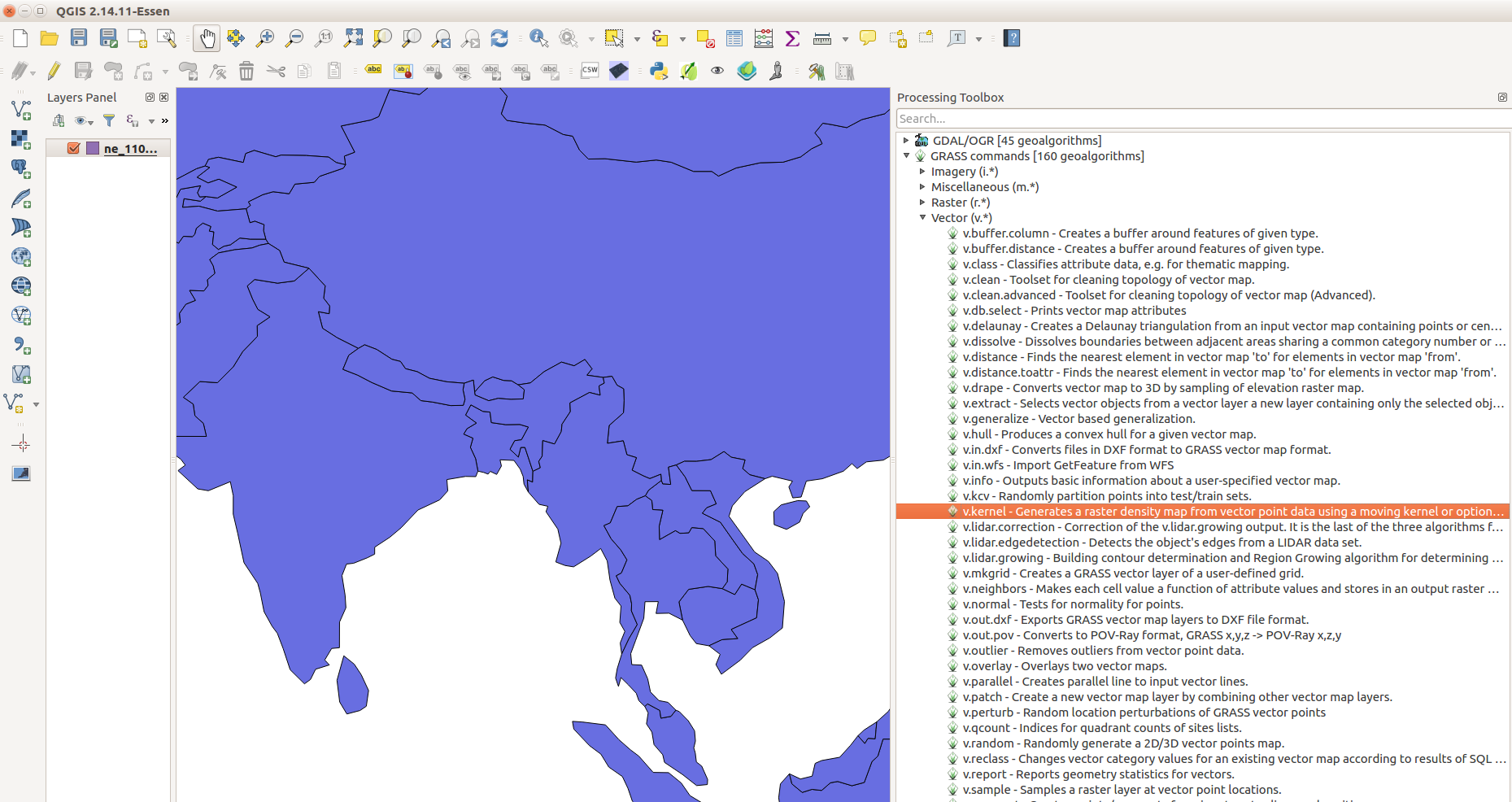
New Documentation
Available online for the preview version
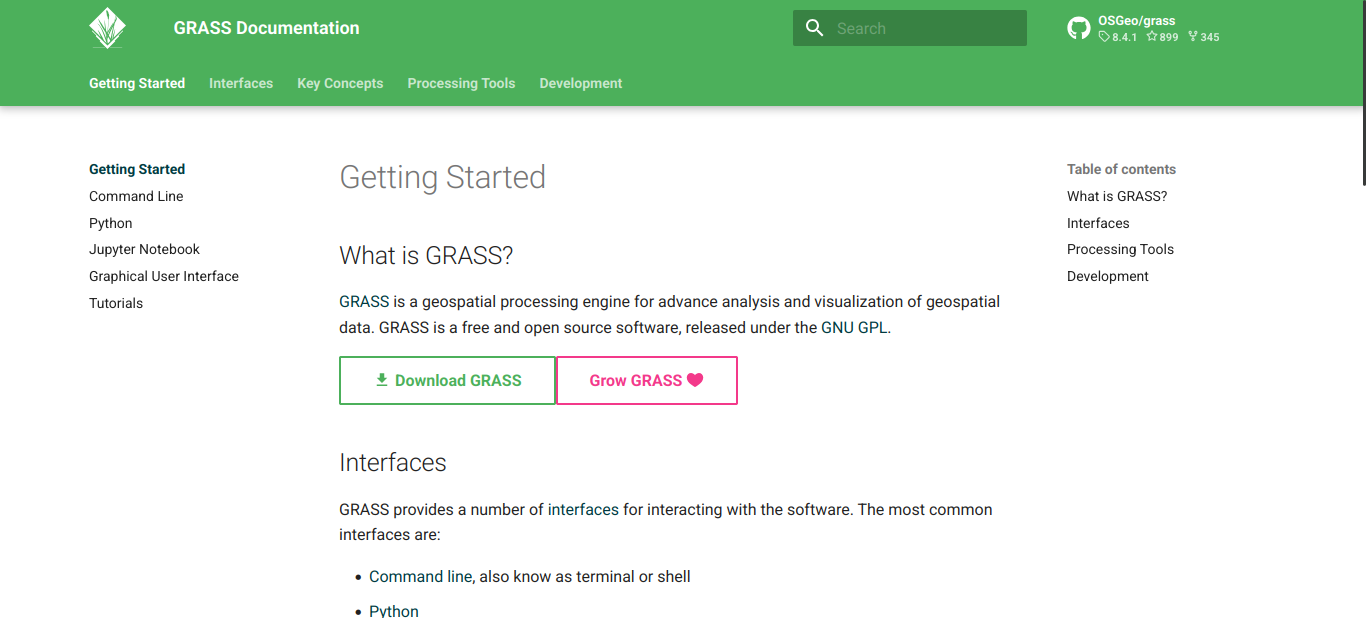
lead by the NC State Center for Geospatial Analytics
New Tutorials Site
Just launched: grass-tutorials.osgeo.org
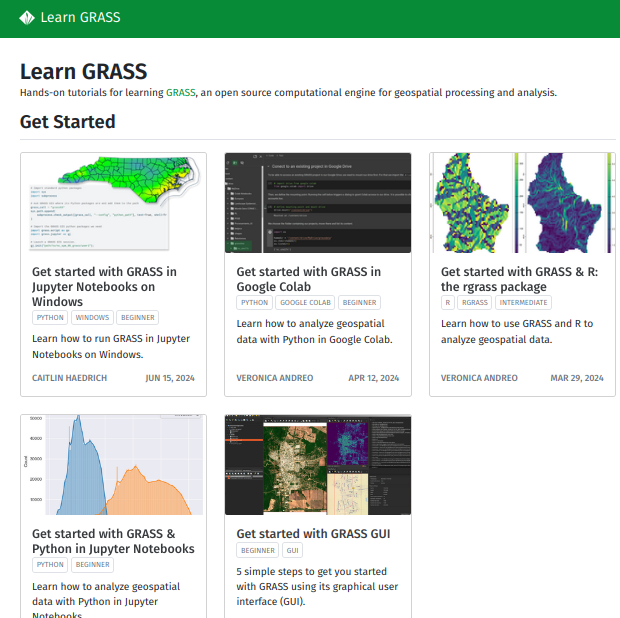
lead by the NC State Center for Geospatial Analytics
NSF Grant Lead by NC State
-
NSF grant awarded to NC State, ASU, NMSU, Yale
- To enhance infrastructure
- To revise contributing guidelines
- To support community building
- The NSF program is not funding new tools, bug fixes, or ongoing maintenance
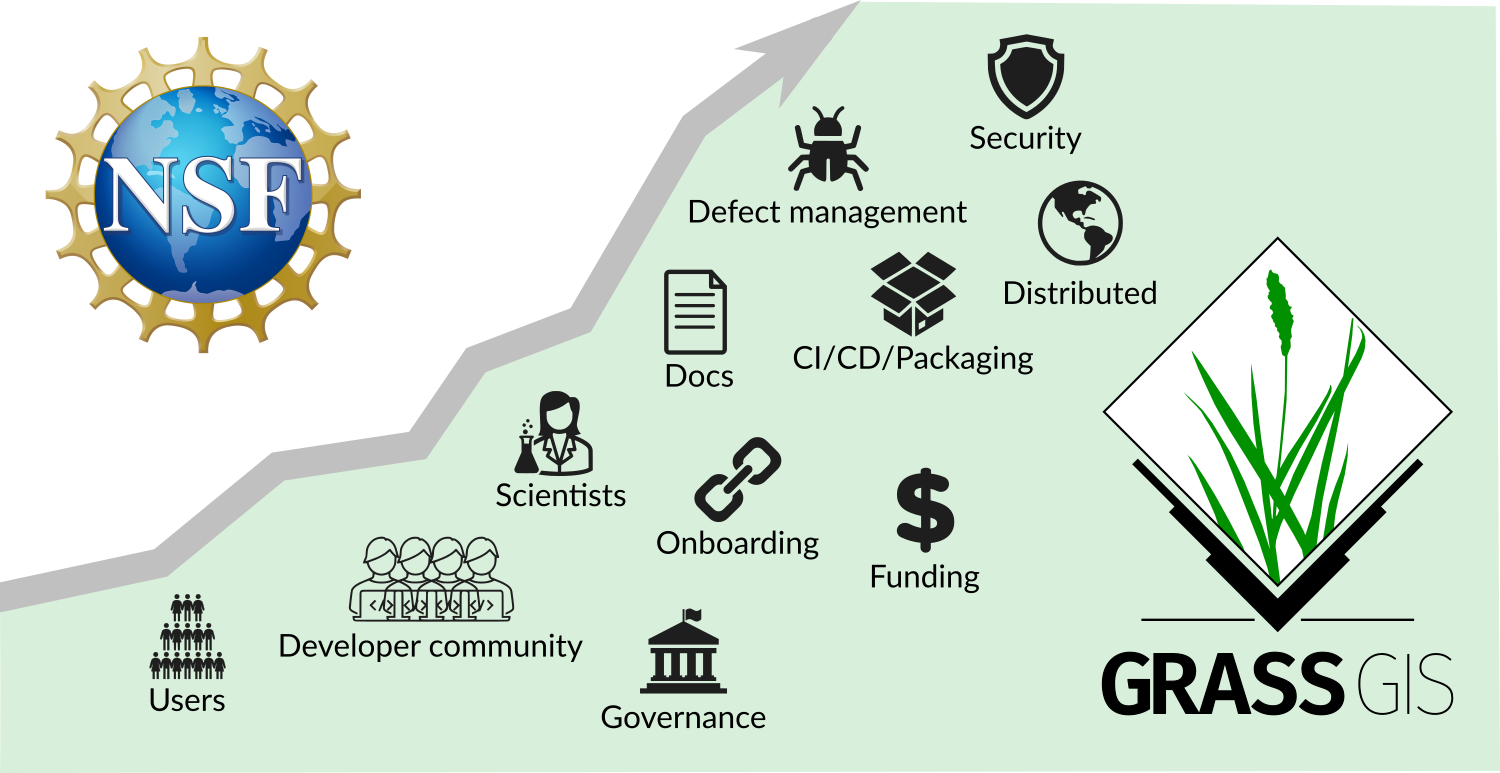
Open-Source Licensing
-
Organizations:
- Clear technology transfer path for research code.
- Provider-independent, contractor-independent.
- Financial investments go to a public pool.
- Pay for support and features, not usage.
- No per-CPU license fees.
-
Individuals:
- Author retains right to use.
- Employer-independent.
- Work computer, personal laptop, or cloud.
- Is it clear how to use it? ✓
- What happens when my funding ends? ✓
- Does it work with the new software versions? ✓
- What if I don't want to touch it anymore? ✓
- What if I need to use it again? ✓
- How someone else will know about it? ✓
- Can someone use it in a different way? ✓
- How can I combine it with some other code?
- How can I use it with different data?
Reusability
Categories of Tools
Name convention and associated parameter conventions
| Prefix | Functionality | Example |
|---|---|---|
| r. | raster processing | r.mapcalc: raster map algebra |
| v. | vector processing | v.surf.rst: interpolation from points |
| g. | general management | g.remove: removes maps |
| d. | display and rendering | d.rast: display raster map |
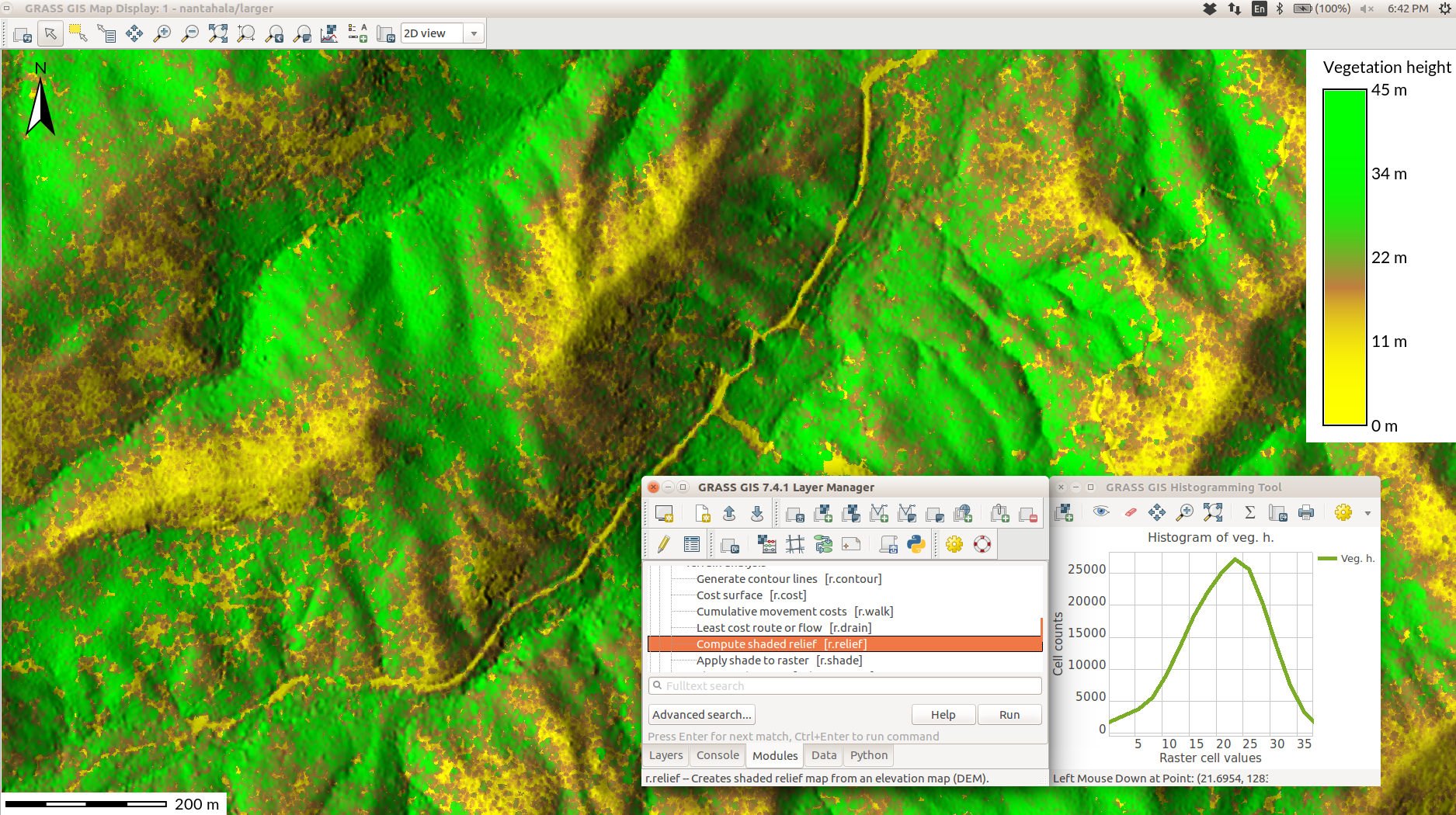
Unified Interfaces
Latest example: JSON output format support(format="json") in multiple tools (v.db.select, t.rast.list, …)
v.db.select roadsmajor format=json
With better integration in Python:
import json
import grass.script as gs
data = gs.parse_command("v.db.select", map="roadsmajor", format="json")
for row in data["records"]:
print(row["ROAD_NAME"])
More coming in 8.5 (r.report, r.info, …)
by Anna Petrasova, Vaclav Petras, Huidae Cho, Kriti Birda, Corey White, and othersTransitions Between Interfaces
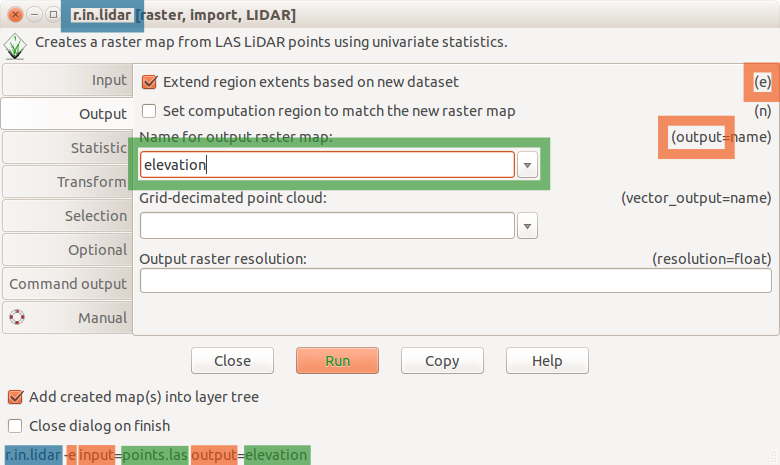
 Python:
Python:

Projects
- Projects separate concerns of data preparation and data analysis.
-
Projects keep the data consistent.
- Same format and CRS for all data.
- Mapsets keep the data organized within a project.
- Work is happening in one mapset, but data from any mapset can be used.
import grass.script as gs
gs.create_project("/path/to/project", epsg="3358")
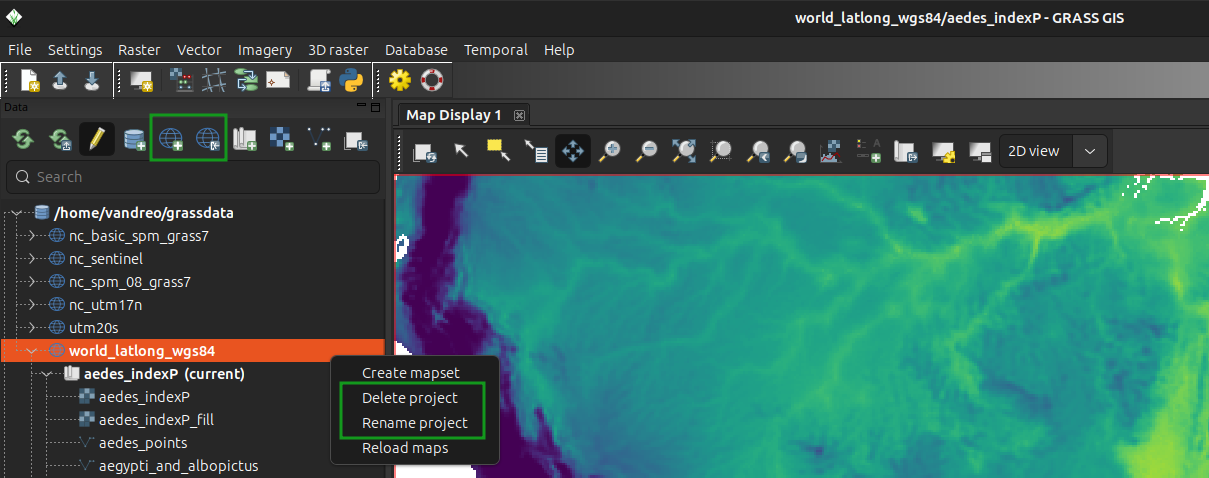
Computational Region
- extent and resolution for raster computations
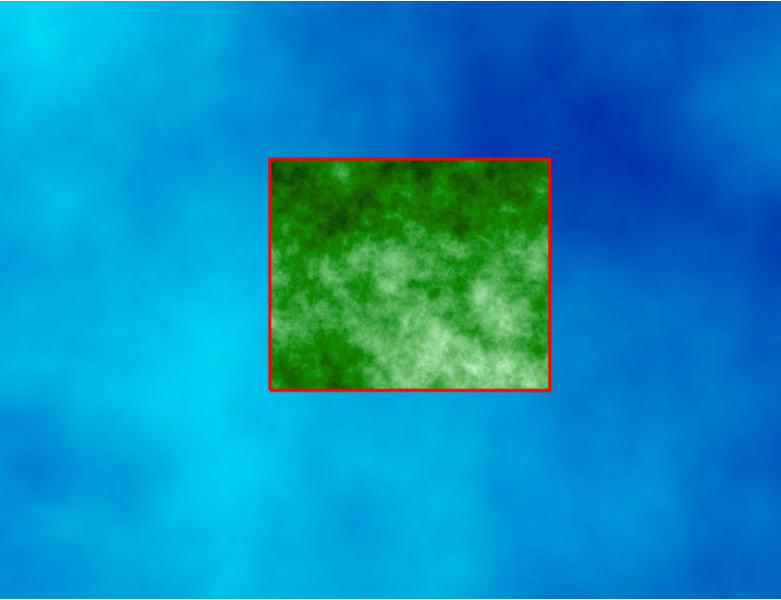
Carrier-long Reusability
- Technologies which stay and don't disapear in couple years.
- Bash scripting, Python, GRASS
- Longetivity, open-source, platfrom-idependent
- Things develop, versions update, features are added...
- ...but general ideas stay the same.
Code from 2002 running in 2025?
version 5.0 code works as is in 8.4:r.mapcalc depr.bin="if((elev - fill)< 0., 1, 0)"
although there is a better way to write it:
r.mapcalc "depr_bin = if((elev - fill) < 0., 1, 0)"
- Is it clear how to use it? ✓
- What happens when my funding ends? ✓
- Does it work with the new software versions? ✓
- What if I don't want to touch it anymore? ✓
- What if I need to use it again? ✓
- How someone else will know about it? ✓
- Can someone use it in a different way? ✓
- How can I combine it with some other code? ✓
- How can I use it with different data? ✓
Next Steps
Mentoring and Student Grants Program
- Mentoring to integrate GRASS into your workflows (registration closes in May)
- Student grants to contribute to GRASS (call open for 2025)
- Google Summer of Code to become an open-source contributor (get ready for next year)
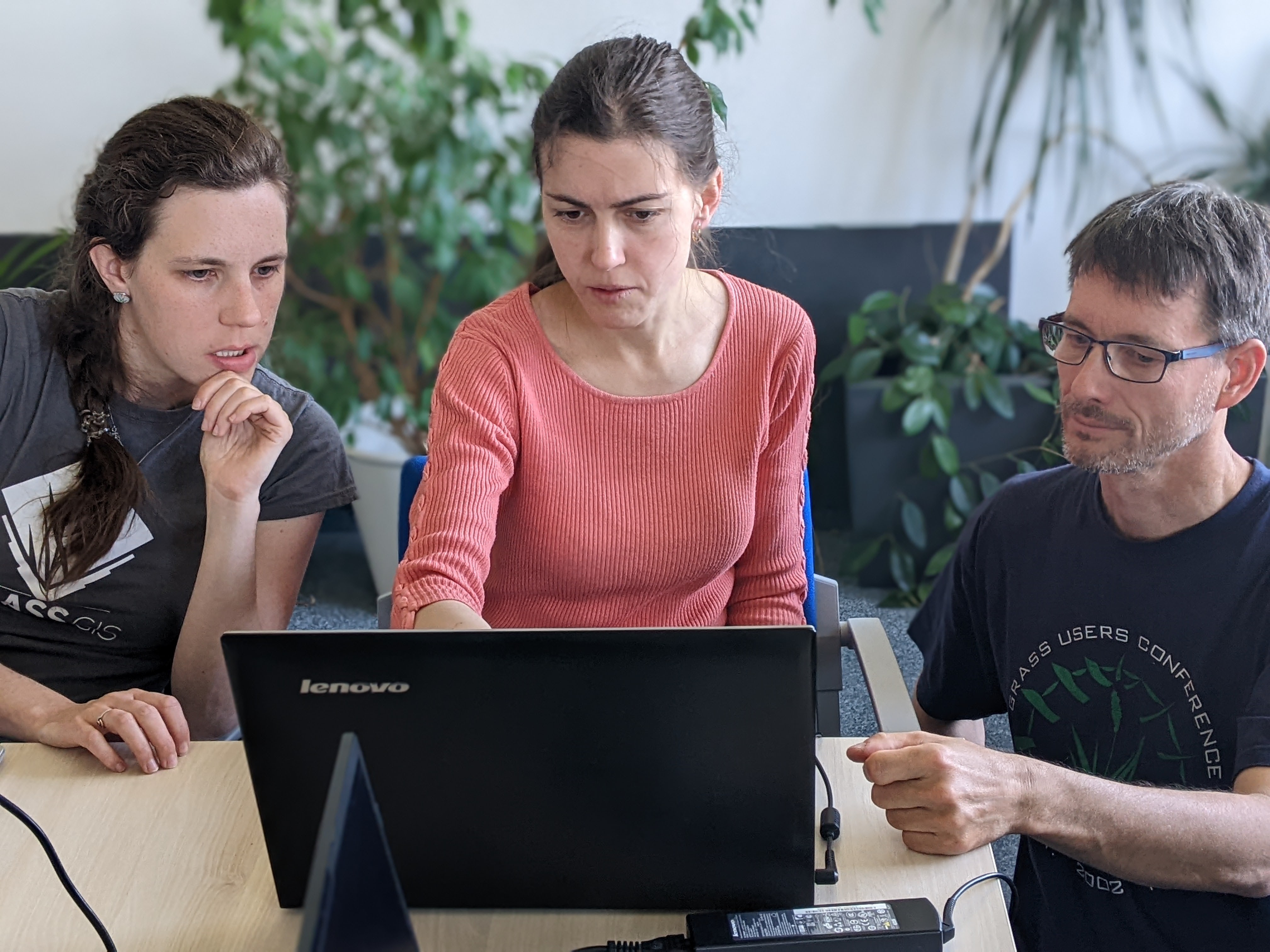
co-lead by the NC State Center for Geospatial Analytics
GRASS Developer Summit 2025
- Raleigh, NC
- May 19-24
- Register and become an insider: tinyurl.com/grass-2025

lead by the NC State Center for Geospatial Analytics
GRASS Lightning Talks
- Thursday, May 22 at NC State, 4pm
- User-focused session
- Speakers from mundialis, Natrx, Bohannan Huston, government, and academia
- RSVP: tinyurl.com/grass-2025
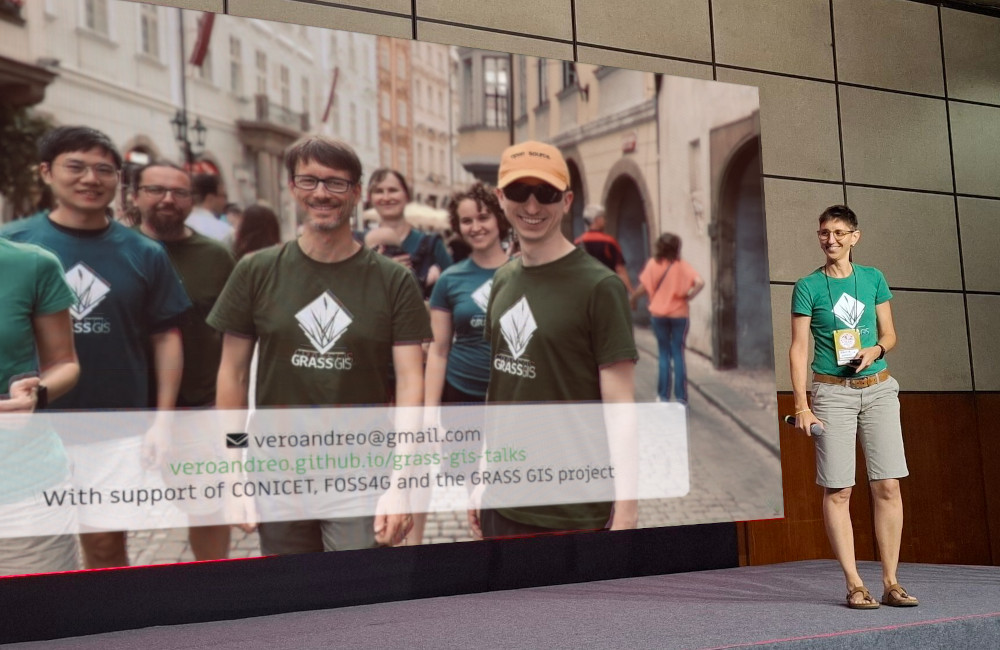
lead by the NC State Center for Geospatial Analytics
Community
Thanks to all those involved!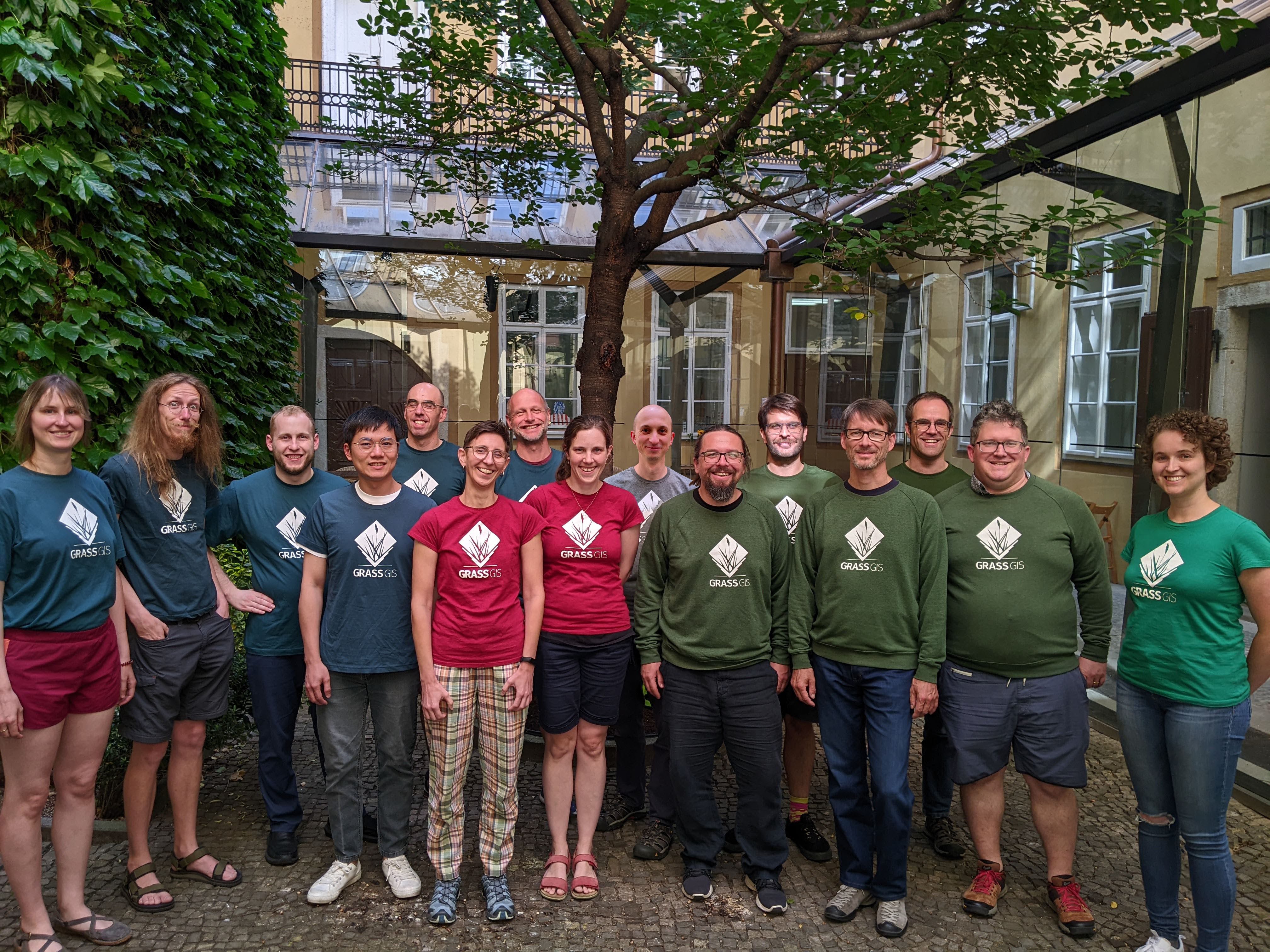

Summit and Lightning Talks: tinyurl.com/grass-2025
vpetras@ncsu.edu, LinkedIn: Vaclav Petras, @wenzeslaus
wenzeslaus.github.io/grass-talks
This talk was funded by the US National Science Foundation (NSF), award 2303651.